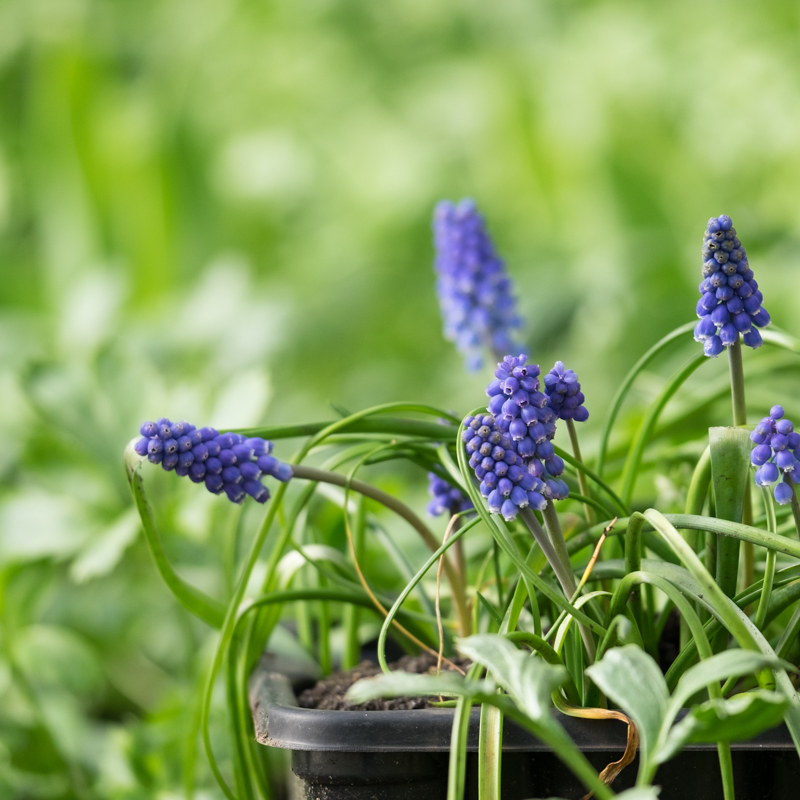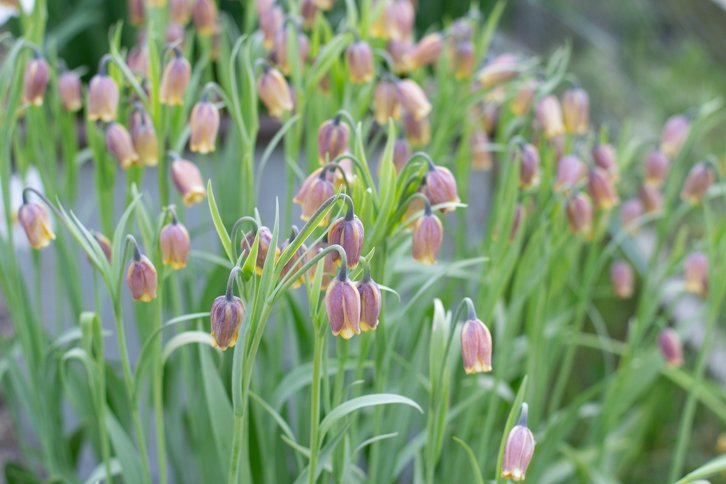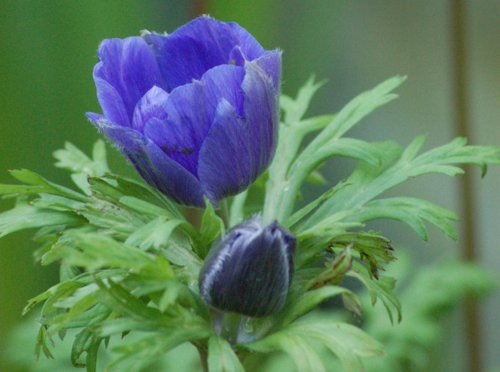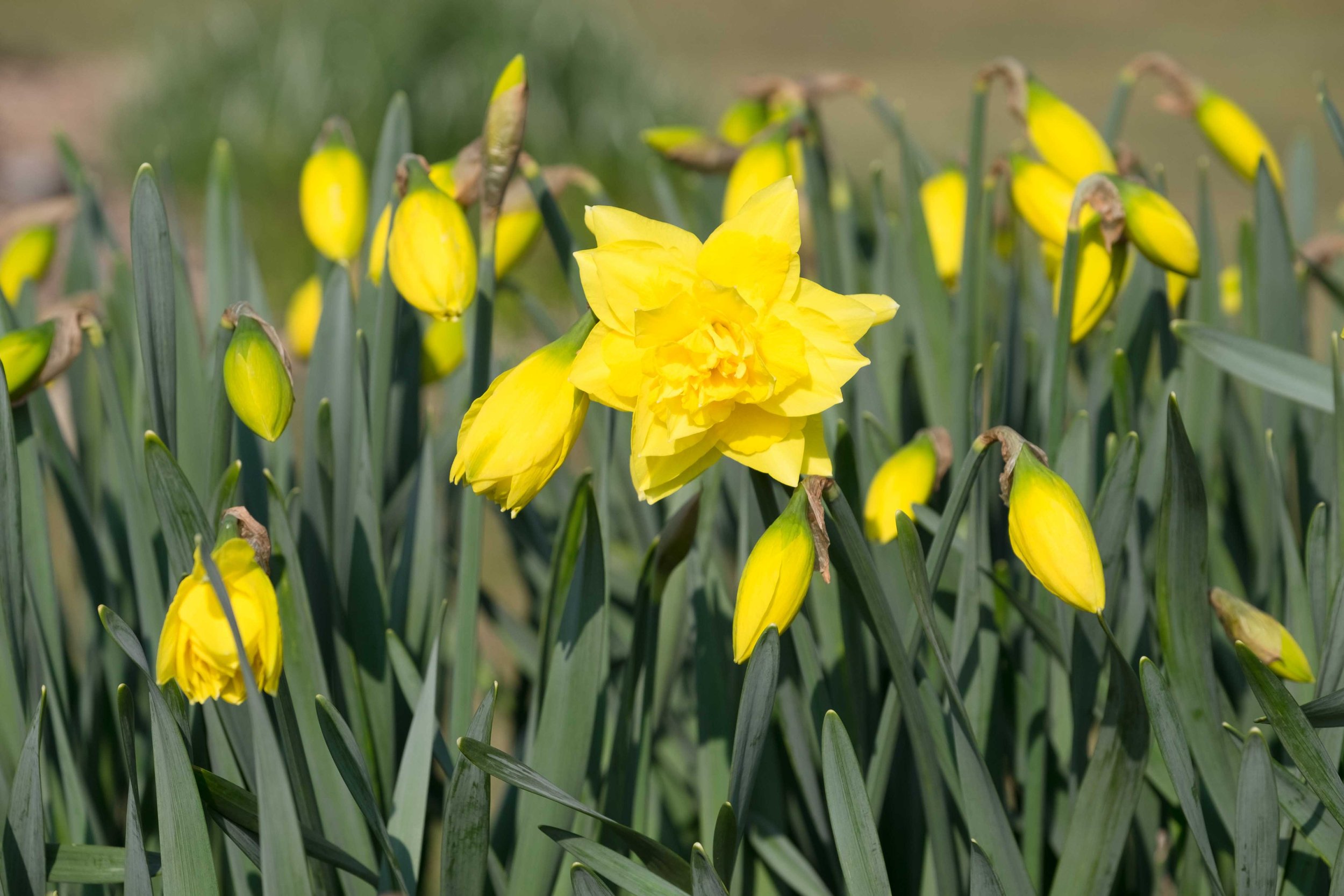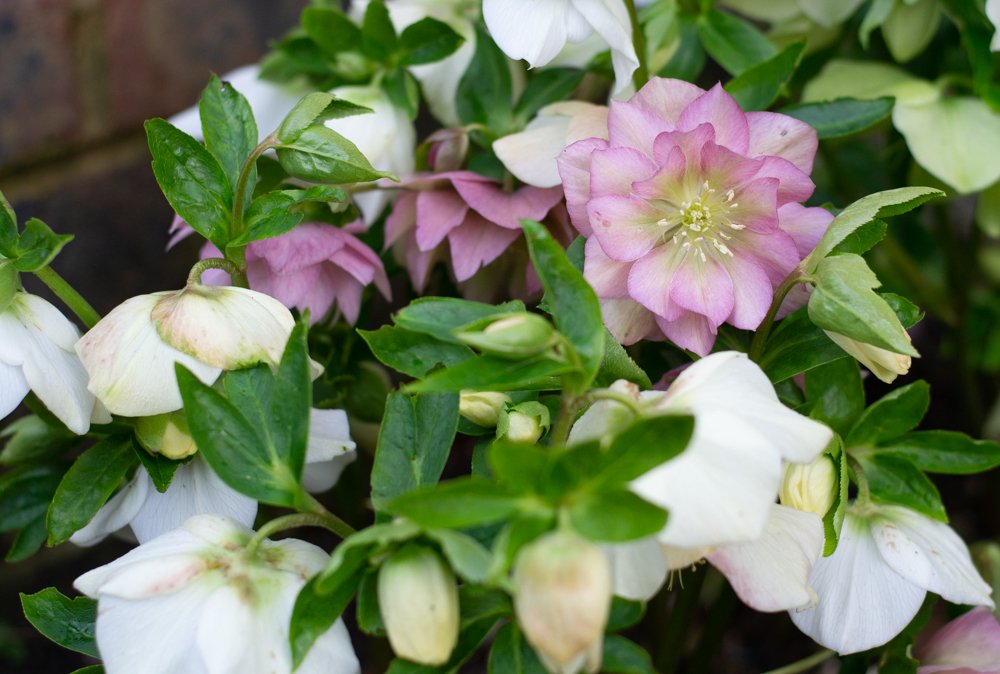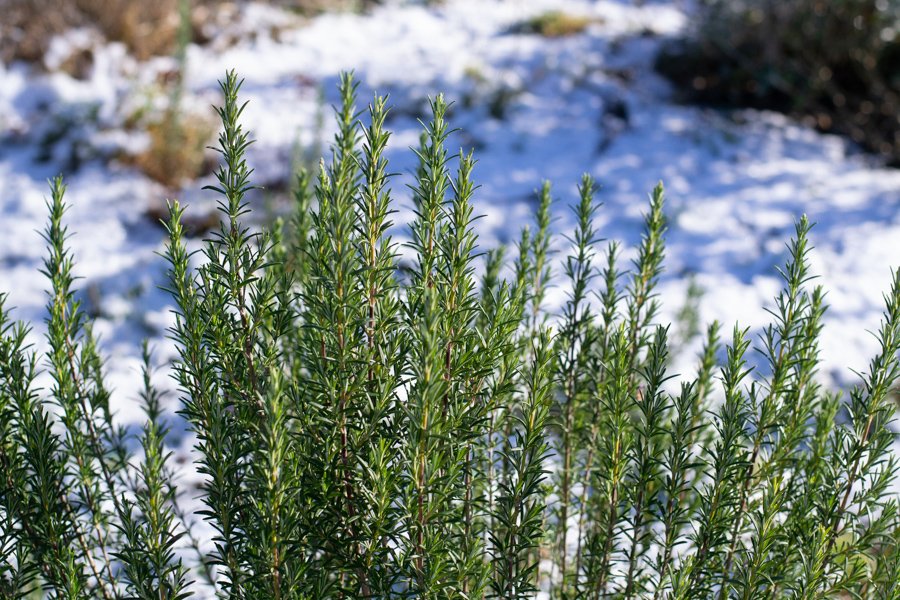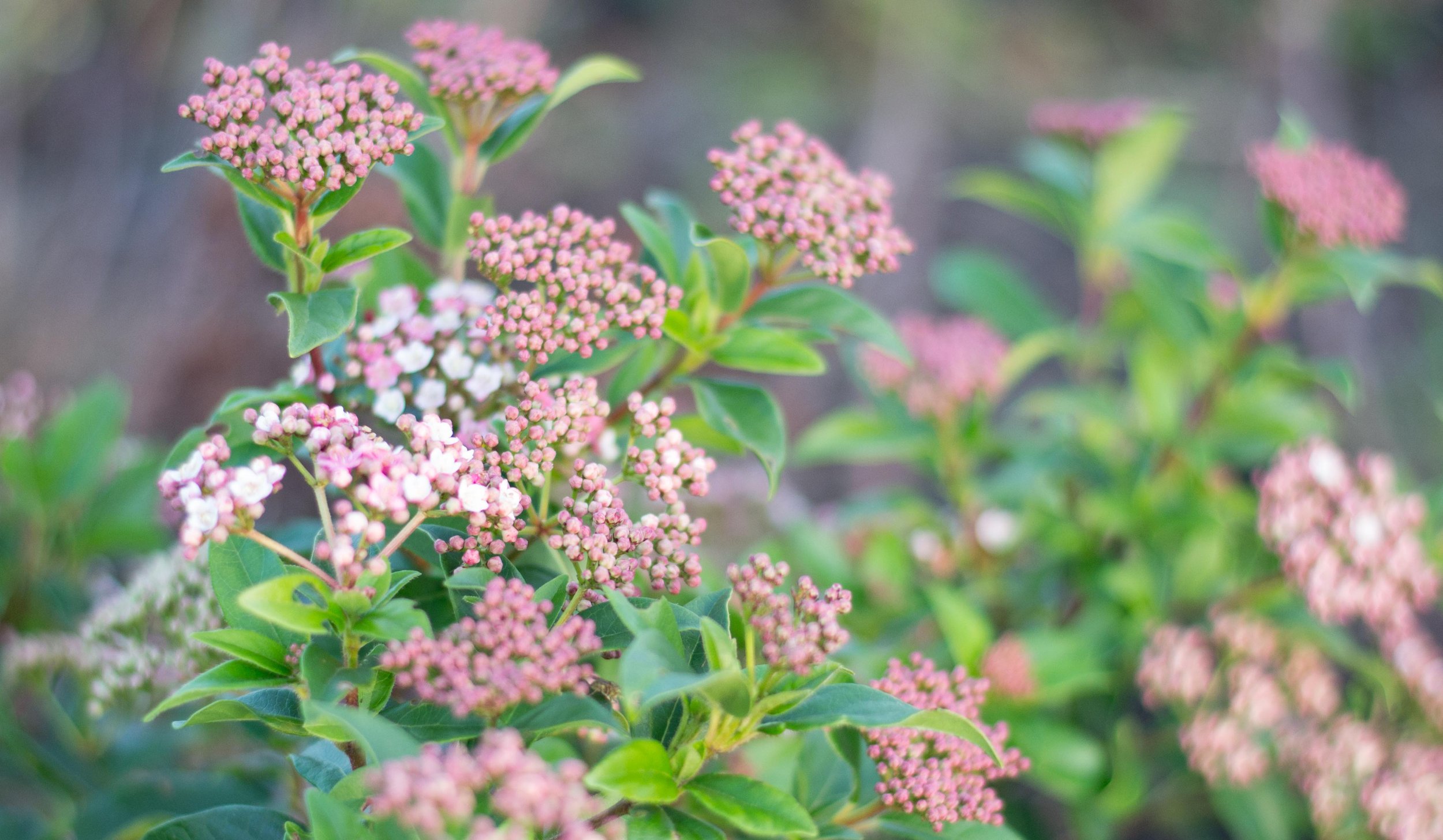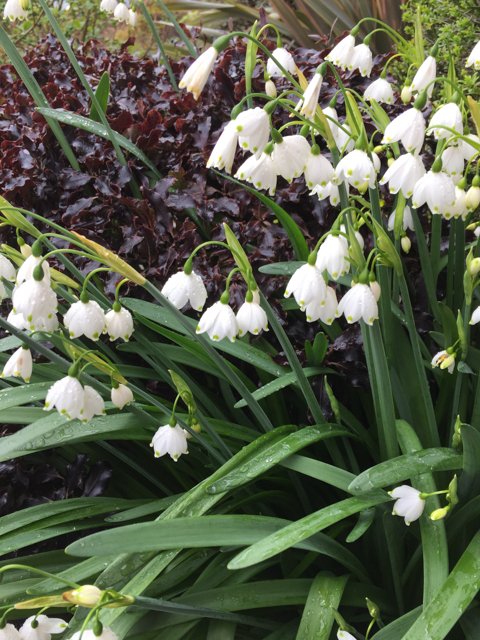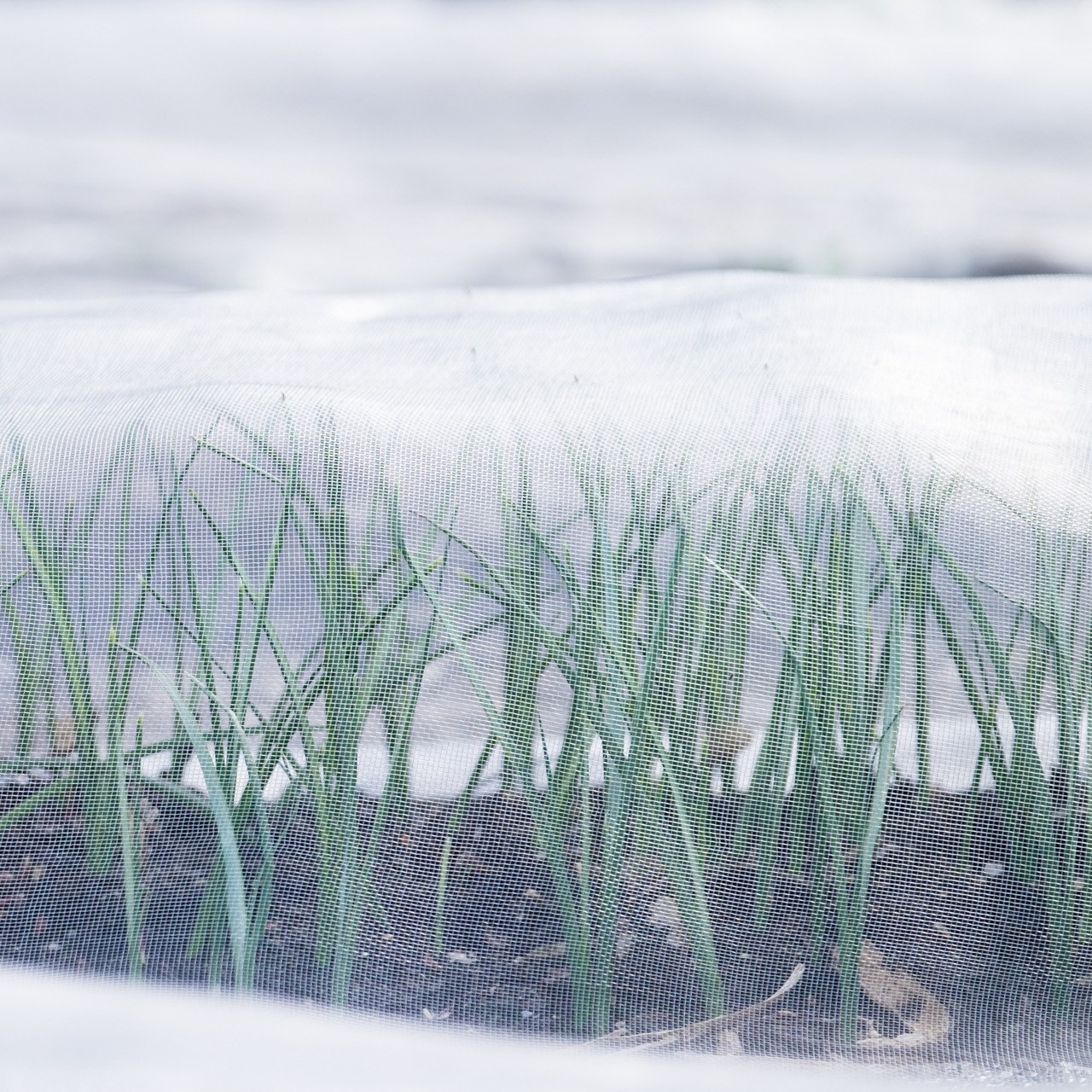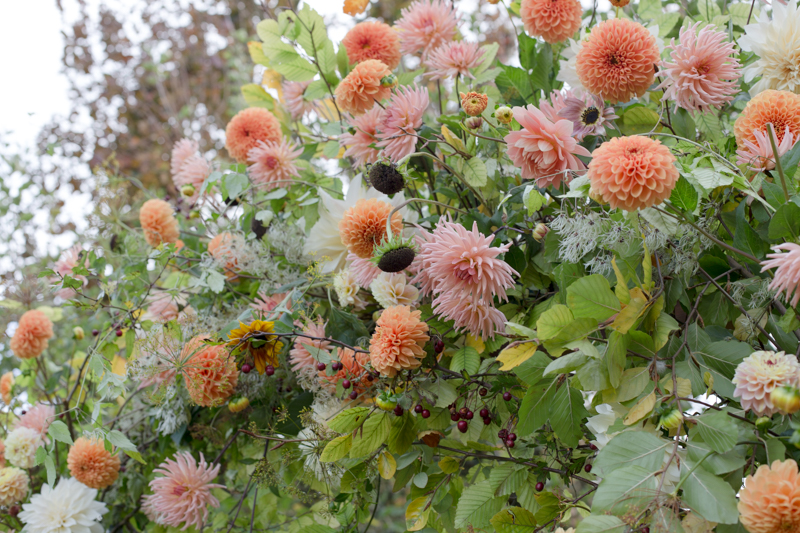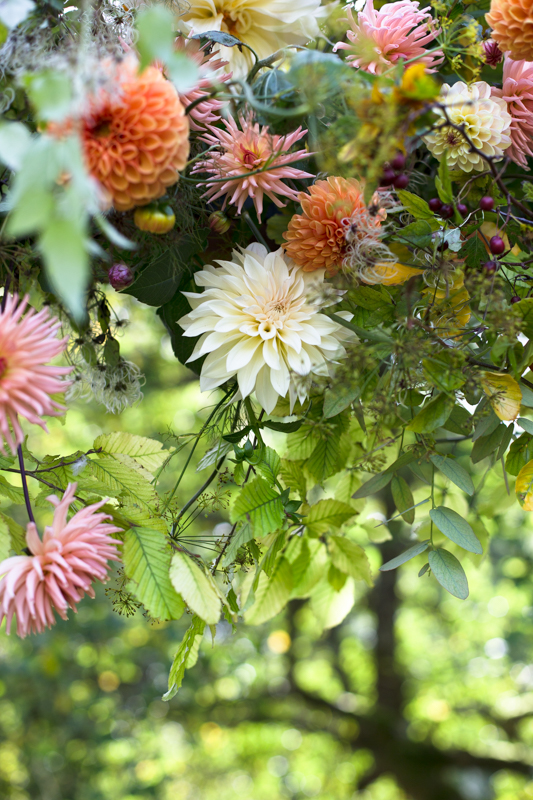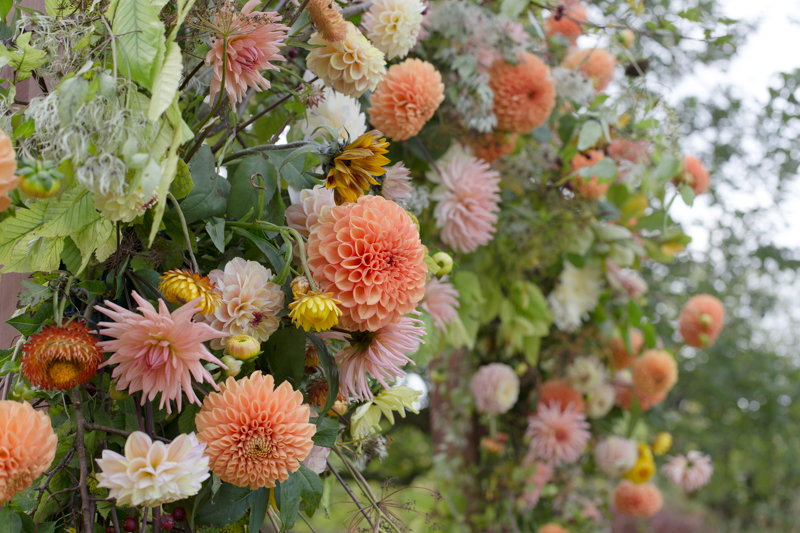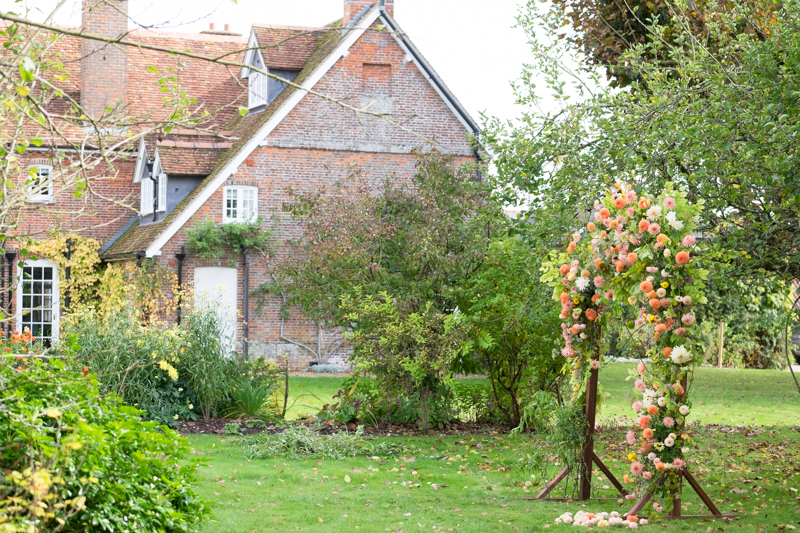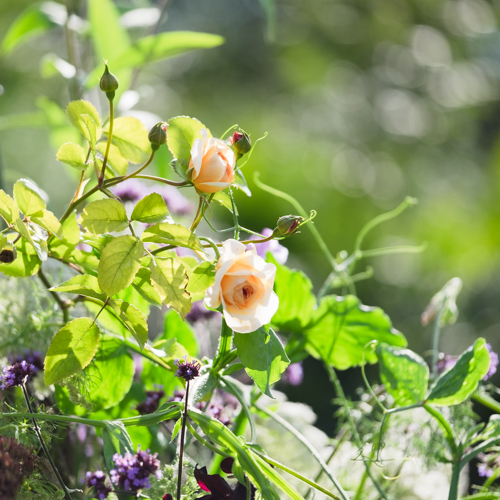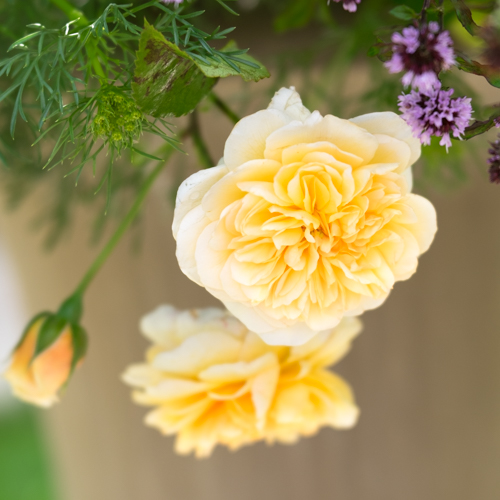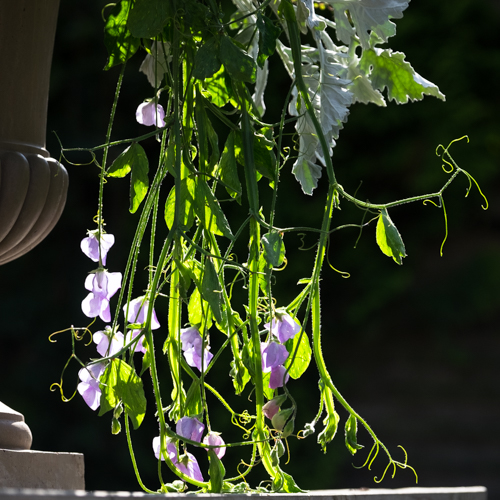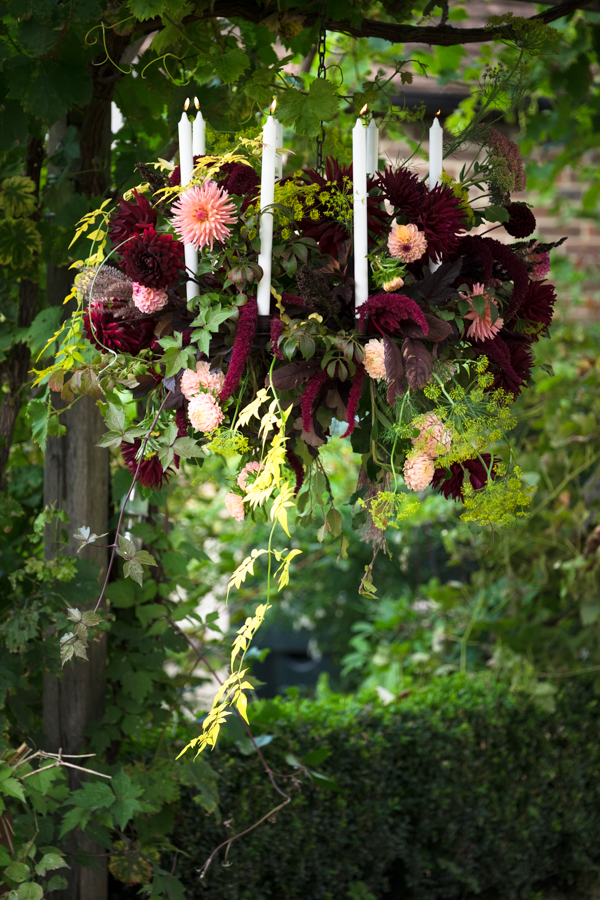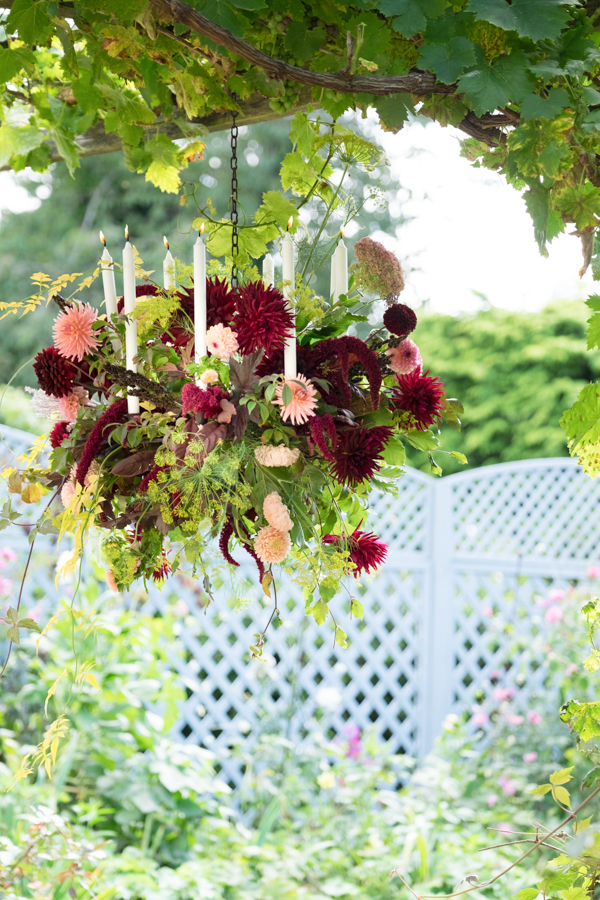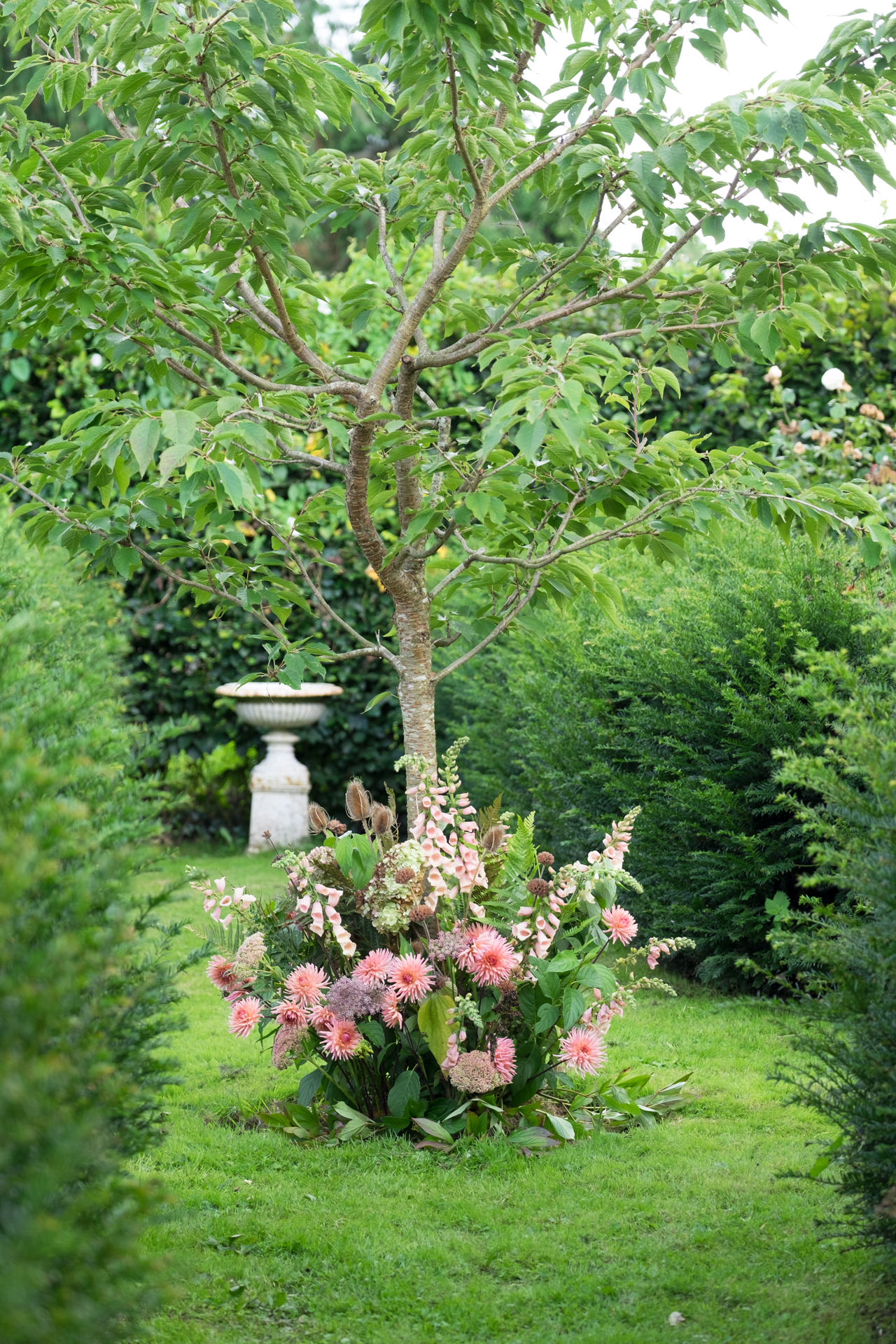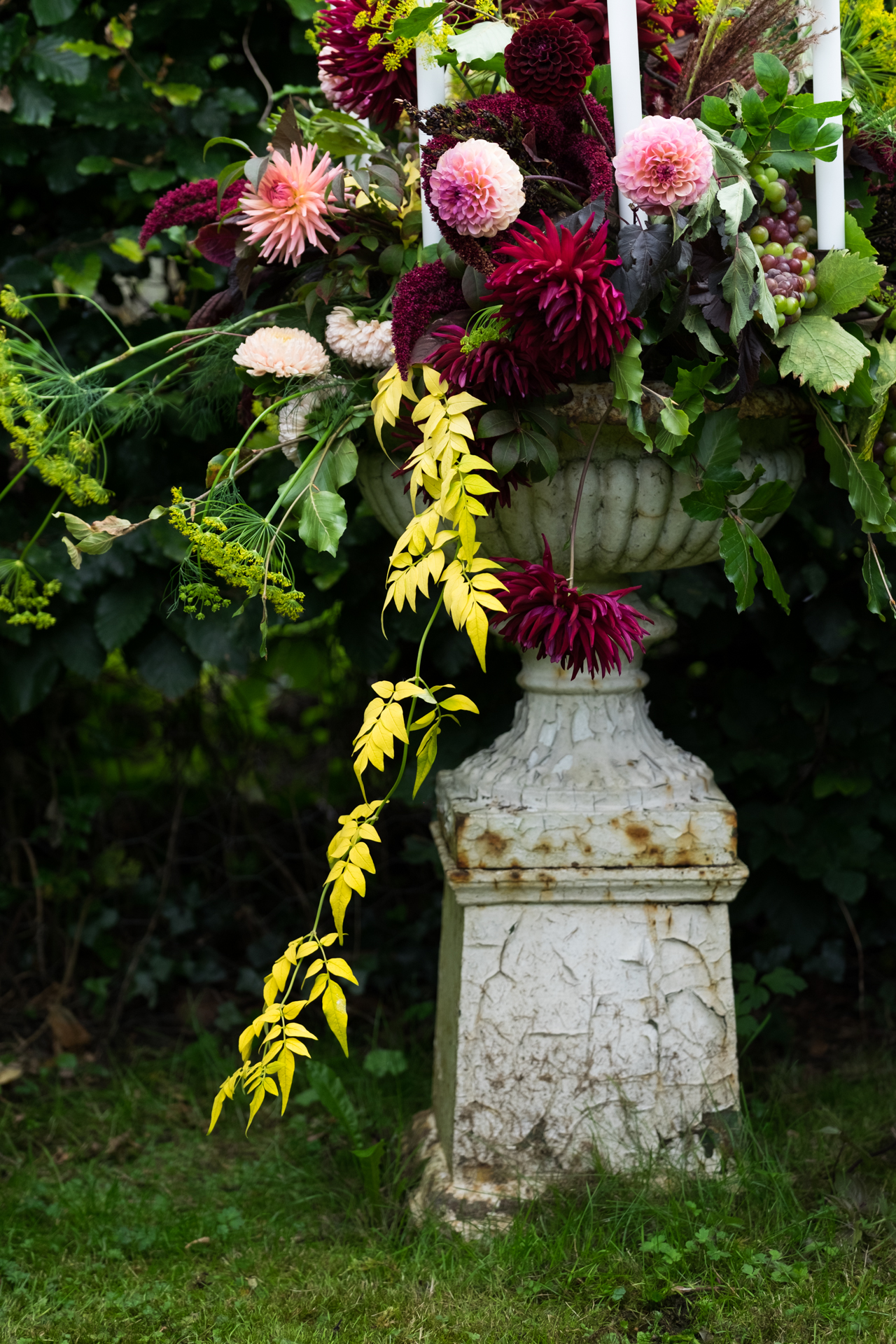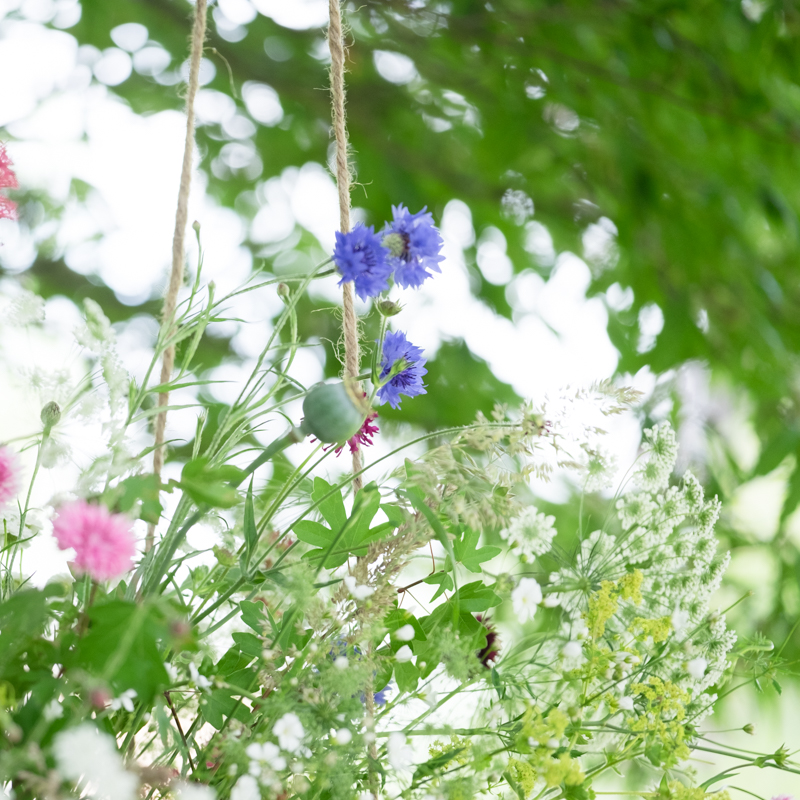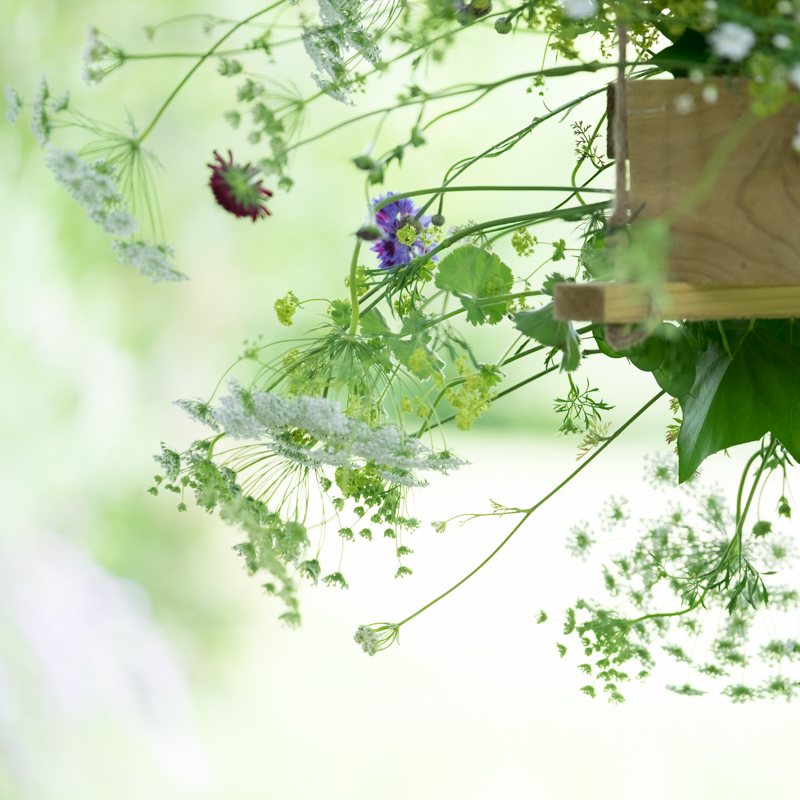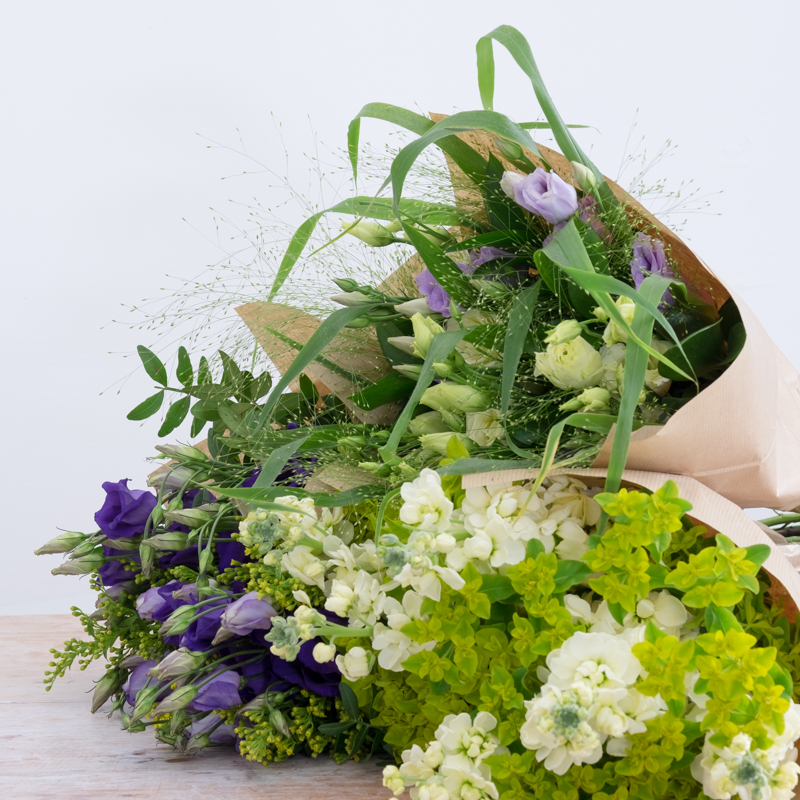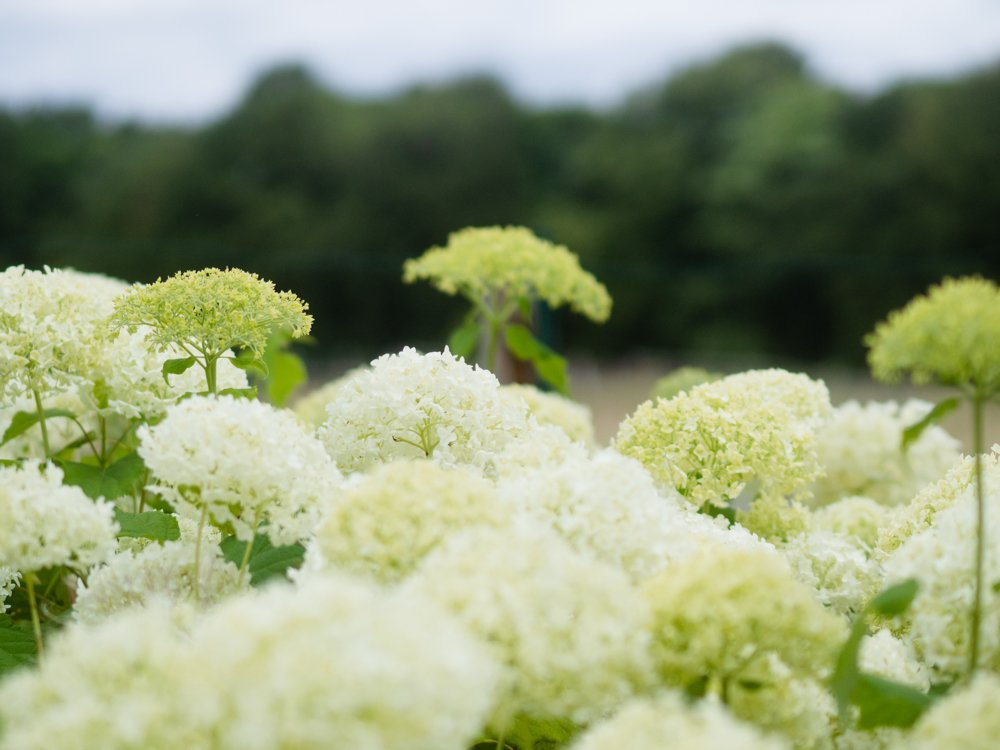
BLOG
What's available from Artisan flower farms in the UK in March
What’s available from UK Artisan flower farmers in March
March is the very start of the season, so not all farms will stock these flowers.
It’s the 2nd week of March, and flower farms are just starting to have signs of life. Here are some of the things you may find available from your local flower farm over the coming weeks, -do check the Flowers from the Farm website for your local supplier, or the Book for larger wholesalers.
Hyacinths will be available from Artisan and Commercial suppliers this month. With amazing fragrance, these are shorter stems that pack lots of scented punch.
Anemones, Muscari, Narcissus and Fritallarias are all bulbs that will be making an appearance this month.
And outdoors:
Hellebores, Leucojum, Viburnum, Euphorbias, and foliage from Rosemary, Senicio, Eucalyptus, Choisya and Pittosporum.
There are lots of crops coming up fast, currently protected by environmesh, so by Mother’s Day at the end of the month, there will be more to be found.
More bulbs, waiting to flower.
Leucojum, The Snowflake. For late February and March
Leucojum, or the snowflake are often mistaken for the snowdrop (Galanthus) but they usually flower a couple of weeks later, and have longer stems, which make them great for bouquets.
Leucojum, or the snowflake are often mistaken for the snowdrop (Galanthus) but they usually flower a couple of weeks later, and have longer stems, which make them great for bouquets.
These dainty bells have buds which open up along the stem, so you can often get to 4 or 5 flower heads open as the buds bloom.
Often available at the same time as the first Anemones, Hyacinths and Hellebores, they are quintessential early Spring blooms
They have soft stems, so if are best used as an inner ingredient in a bouquet, so that tieing them with twine or spring doesn't bend the stem.
Getting the best from your Hellebores as cut flowers
As a grower, the Hellebore is one of my favourite flowers. The main reason for that, apart from them appearing as one of the first flowers of spring, and being so beautiful and delicate, is that I get to enjoy them for several weeks before i cut them to sell to florists.
As a grower, the Hellebore is one of my favourite flowers. The main reason for that, apart from them appearing as one of the first flowers of spring, and being so beautiful and delicate, is that I get to enjoy them for several weeks before i cut them to sell to florists.
February is the main month for Hellebore flowers to appear, and for colour in the garden at the start of the season, hardiness in bad weather, and being able to take most soils, they are hard to beat. They mostly have heads that hang down, but if you prop them up in a bouquet, or hold up their heads, then you can see the wonderful flower detail inside the petals.
Unfortunately while they've got their wonderful pretty faces on, and the anthers are still frilly as every florist knows, they are notoriously tricky to keep them conditioned, and the heads often flop and can't be revived.
This makes them difficult to use in anything other than same day events, and means sourcing them is time consuming.
Tips for keeping them in the best shape include, keeping them in deep water, scoring the stems lightly so they take up more water, and keeping them cool but not cold (if you've seen hellebores in a garden after a frost, you'll know the fridge isn't the right place for them).
However wait a little bit longer, until the seed heads are forming, and the Hellebore becomes a much easier to work with flower stem.
or for a double, the seed pods aren't always so apparent
When they get to this stage, the vase life will be a lot longer, (often over a week) the stems stronger, and longer, and although the colours are slightly muted, they are still strong.
and because i'm a member of the #Helleboreappreciationsociety, here's a few more pictures to brighten up your day
Hellebore foetidus
Hellebore Foetidus is a flower that I'd come across lots in client gardens. It was hardy, didn't mind some shade, flowered in the middle of winter (it's often flowering in my garden on the 1st of January or before, and continues until March) and is a lovely green colour that goes with just about everything.
Hellebore Foetidus is a flower that I'd come across lots in client gardens. It was hardy, didn't mind some shade, flowered in the middle of winter (it's often flowering in my garden on the 1st of January or before, and continues until March) and is a lovely green colour that goes with just about everything.
Helleborus Foetidus
I hadn't thought of it as a cut flower because of the name, Stinking Hellebore. Foetidus means smelly (fetid) so why would you want that in a bouquet, and sure enough if you stick your nose near one in a garden, you probably won't keep it there for long.
BUT, if you cut it into water, and condition it changing the water at least once, the smell dissipates and in its place you have a lovely branching stem, with green flowers often fringed with burnt red. Excellent as a base for a winter bouquet or stylish display base.
So I transplanted a whole bunch of seedlings, and now I have a full bed of stylish green winter flowers which support my delicate winter flowers in bouquets. This year we planted even more, so hope to have them for florist sales by next year.
If the leaves escape from Hellebore blight (black splodges) they are also a wonderful shape for floral arrangements.
Here Hellebore Foetidus frames the paperwhite narcissus
If you’re a grower, watch out for them seeding themselves very early in the Spring, they are difficult to grow from seed as they need winter vernalisation.
Pretty in Pink July flowers
We’re 3 years on now from when a lot of the photos were taken for the book. I wanted to know how relevant it was to what i’m growing now. So last week I toured the field spotting everything that was available that went with the July colour layouts from the book. This is what’s available in the middle of July for Pretty in pink July flower themes.
Variety names (where known)
Top Rose Eglantyne, Astrantia, Clary Sage Pink Sundae, Accrinolinum, Malope Blushing bride, Cornflower pinkie and classic romantic
Right hand side, Scented Pelargonium, Flowering Moroccon mint, Bells of Ireland, Centranthus Alba, Hordeum Jobatum, Linaria Canon Went, Larkspur,
Bottom, Scabious Rose, Phlox, Daucus Dara, Jasmine, Achillea, Berried Hypericum, Sweet Pea Anniversary,
Left hand side, Ammi Major, Veronicastrum, Veronica Pink Spires, Antirrhinum Pink trumpets, Antirrhinum Potomac Ivory, Oregano, Alstroemeria.
The White Horse Flower Company
guest post Emma Davies
What an epic end to the dahlia season. Lindsey from The White Horse Flower Company volunteered to create an arch with Claire's flowers, and she overdelivered:
Dahlia flower arch
Guest post Emma Davies
What an epic end to the dahlia season. Lindsey from The White Horse Flower Company volunteered to create an arch with Claire's flowers, and she overdelivered:
ED: What do you love about using British flowers?
LK: "Their abundance and continuous evolution through the seasons. It’s refreshing to get a flush of something and then have to wait until the next flush of flowers arrives. I love their freshness - knowing they’re often cut to order makes them particularly special.:
ED: Where do you source your British flowers?
LK: "Wherever I can. I buy as locally as possible and as much as possible."
ED: What would you like to see change in the industry? How could growers/ suppliers make it easier for florists to buy British flowers?
LK: "This is my main issue. I could travel all day driving and gathering buckets from growers in Hampshire, Berkshire, Wiltshire, Surrey and Oxfordshire but this then cancels out all the green credentials as I clock up dirty diesel mileage. Add to this I don’t have the luxury of time to do it. So a hub or central market would really be my ideal solution. It’s probably the single thing that stops me buying more British Flowers."
As a side note, if you've been wondering how to make Instagram Stories work for you, follow Lindsey for a bit and see how she does it. They are true behind the scenes insights into her working day, engagingly done.
Thank you to premier Hampshire wedding location Clock Barn and Tufton Warren for your hospitality.
Jay Archer
Jay agreed to do "something big" for the British Flowers Book this month - and she didn't disappoint:
A quick behind the scenes:
Jay can be found at Jay Archer Floral Design, and Jay Archer Floral Design Flower School.
Cherfold Flowers
Not just a floral chandelier, but also a gorgeous dog to photo bomb the shoot.
Caroline from Cherfold Flowers did a beautiful late summer styled shoot for the book - not only a floral chandelier but also a ground-level arrangement complete with dogs.
What do you love about using British Flowers?
CF: For me British Flowers hold that extra excitement – an arching branch, a curly stem – somehow each flower head has it’s own personality and that is definitely harder to find with imported varieties. They also feel ‘tougher’ and more robust from having travelled less distance in less time. Surely the longer the flowers to take to reach their destination the longer it will take them to recover from the ordeal – it’s a bit like us with jetlag!
Where do you source your British Flowers?
CF: I grow my own flowers so I am lucky to have a good supply as soon as I walk out of my front door. This being said I only have half an acre in total in which to squeeze everything in, so I do have gaps inevitably. Plantpassion is my next port of call after my own garden and I love the Anemones during Winter time from Flowers by Clowance.
What would you like to see change in the industry?
CF: For British Flowers to be even more readily available to buy for people as a real alternative to imported flowers.
How could growers/suppliers make it easier for florists to buy British flowers?
CF: More delivery options, the whole ordering system to be as seamless and effortless as it can be on the online auctions. For growers to pool their flowers so that if one grower cannot supply the florist, then they can work together to find one that can. Great photos also help ie with Dahlias, some of the less familiar names can be tricky to remember!
Caroline's garden was a photographer's dream, with nooks, crannies and pedestals everywhere you turn:
I'll leave you with the star of the show:
Guest post: Emma Davies, staff photographer
Whispers & Snippets
Never one to disappoint, Whispers & Snippets delivered an epic floral swing in this classic June shoot for the British Flowers book.
Melissa and Laura promised me something unique, and they didn't disappoint. I give you the very first British Flowers Book floral swing:
Thank you to father of the florists for helping out with the heavy lifting.
What do you love about using British flowers?
W&S: "We love how British flowers bring an amazing aroma to our arrangements; it's something you just don't get from flowers that have travelled from farther afield. There's also something very nostalgic about British flowers - they conjure up memories of when we were younger, crushing rose petals into perfume."
Where do you source your British flowers?
W&S: "From farms such as Plantpassion and The Real Flower Company, and we also get a selection from New Covent Garden Flower Market in London.
What would you like to see change in the industry? How could growers/ suppliers make it easier for florists to buy British flowers?
W&S: "We would like to see British Flowers used by more florists, and for there to be more of a focus on biodegradable sundries where possible. We think the industry could be better at sharing ideas, although there are definitely a lot of florists who are already very good at doing this.
The industry, like many, is also prone to being misrepresented online - this can be confusing for our customers and often means that by the time they approach us they've already gained an unrealistic expectation as to how much things cost. We try to be really transparent about our pricing so that our customers can clearly see what they're paying for when they work with us. It's important that as an industry we don't undervalue our product and offering."
Whispers & Snippets was established by sisters Melissa & Laura out of a desire to create beautiful bespoke floral designs.
Growing up in the Cotswolds, home grown country garden blooms are close to their hearts.
In establishing Whispers & Snippets Melissa and Laura were determined to make floristry accessible to all and inspire others to see flowers differently and in a less traditional way. Being studio based florist’s means Melissa & Laura aren't restricted to one location and often travel all over the UK with their workshops & floral styling events.
Guest post: Emma Davies, staff photographer
If you are a florist who uses mostly British grown flowers and would like to be featured on The British Flowers Book blog, please apply here: British Flowers Book Shoot Application.
The Urban Flower Farmer
It was a joy to work with Emma Sousa recently as she rebranded her business to become the Urban Flower Farmer. She is a dedicated and successful British flowers florist, growing her own and sourcing locally. This shoot took place on 15 May and used all British grown flowers and foliage.
Guest post: Emma Davies, staff photographer
It was a joy to work with Emma Sousa recently as she rebranded her business to become the Urban Flower Farmer. She is a dedicated and successful florist, growing her own and sourcing locally whenever possible. This shoot took place on 15 May and used all British grown flowers and foliage.
What do you love about using British flowers?
Emma: "When I first looked into using British Flowers it was their green credentials and seasonality that attracted me - I wanted to be more eco friendly. But once I started using them it was the variety, the slight irregularity of them and of course the scent that you often get from home grown blooms, as well as their eco credentials of course."
Where do you source your British flowers?
Emma: "When I first looked into it I found it hard to find a grower near to me, being based in London. I started growing my own and now I am into my second season and I haven't looked back. I am a really small scale grower who primarily grows for my own business but occasionally I buy in from other bigger growers like Clowance, Smith & Munson and Lambs when I don't have something or I need to top up for really big events. I recently got the most amazing peony and stocks from Lambs in Lincolnshire - they beat the imported ones hands down, for size, scent and longevity."
What would you like to see change in the industry?
Emma: "I think people are becoming more aware of where their flowers come from but I think it is a very slow process and there are so many people that don't even think about flowers and their origins. It would be nice for the government to recognise flower farmers and support them more, however large or small scale - and I am a big fan of labelling where your flowers come from. If they are British grown then shout about it.
It amazes me how many people really don't realise that the flowers they are buying are shipped from all over the world from places like Kenya - people are actually quite shocked and once you sow the 'buy local' seed they would much prefer to support UK growers. We also used to have an amazing industry in the UK but unfortunately like all of the farming industries here our growers are having a really hard time and not getting paid a fair price for their product. That is where the smaller scale grower comes in for offering customers something unique."
Is there anything you'd like to add about the industry generally?
Emma: "I think that despite being a really tough industry to make a living from, the majority of florist/growers do it because they are not only exceptionally talented at what they do but because they are really passionate about making a difference, however small. The joy that flowers can make to someones life, albeit for a few days or a couple of weeks is just incredible and shouldn't be underestimated - they have the ability to uplift a person in ways you just can't imagine."
Emma offers beautiful bespoke flowers, specialising in Wedding and Event floristry. She is passionate about using seasonal flowers which is how the flower field came about and why she started to grow sustainable flowers in 2015. She is passionate about the environment and takes inspiration from the world around her.
Visit: UrbanFlowerFarmer.com
As a child she loved to draw and paint and went on to study Printed Textiles at University. When she left she fell into a completely different career as a Fashion Buyer, fast forward to today and she has grown a successful floristry business in London and now grows flowers in urban spaces around London and Hertfordshire. In 2017 Emma re-branded and became The Urban Flower Farmer and continues to grow her floristry business travelling around the UK for wedding & events large and small.
If you are a florist who uses mostly British grown flowers and would like to be featured on The British Flowers Book blog, please apply here: British Flowers Book Shoot Application





